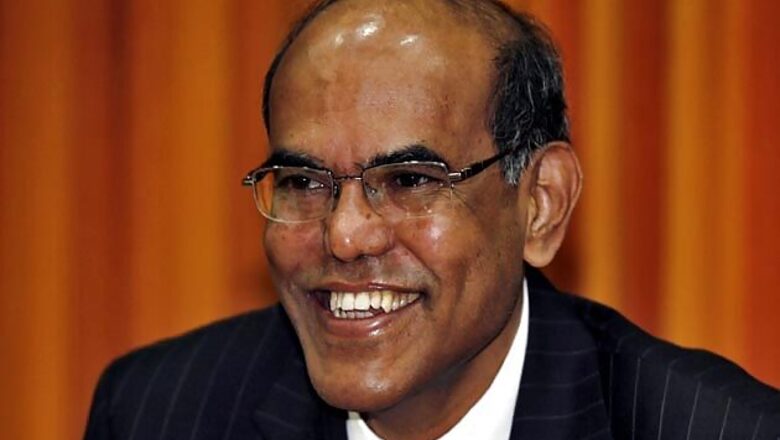
views
Amidst the ongoing talks of consolidating small state-run banks to create one or two globally large size banks, Reserve Bank governor D Subbarao on Tuesday cautioned against making a 'too-large-to-fail' banks, saying what is needed is not a monopolist but a number of comparatively large banks.
Citing the 2008 credit crisis, which was triggered by too-big-to-fail banks, Subbarao said, "we don't need monopolies, instead we need four-five banks of big size, as large banks can become too-big-to fail, leading to moral hazard problems."
He also said "too large banks lead to complexity and too-big-to-fail or too-connected-to-fail moral hazards with adverse impact on financial stability". He also said though consolidation brings in higher capital base facilitating increased lending activity and faster GDP growth, apart from boosting infra financing, and meet demands of corporates, both at home and globally, apart from cost efficiencies and focused supervision, he said it also brings in regulatory issues.
"Significantly big banks can resort to monopolistic practices that may result in unequal competition and distortive and even predatory behaviour in the market. Such practices can also blunt the monetary transmission and market mechanism for efficient allocation of resources," he said.
Addressing a Ficci-organised banking summit in Mumbai, he at the same time said that it will take several years for the country's banks to achieve the status of a large global bank. "Our biggest bank (SBI) is ranked at about 60 in the global league of large banks.
It may take years for our banks to become global players by way of organic growth. However, we should aspire to have a few Indian multinational banks in the near future by selective acquisition, as large banks may dilute the benefits of competition."
It can be noted that Finance Minister P Chidambaram had in May also called for consolidation in the banking sector to create a few large global sized banks saying it was needed for a large growing economy.
Subbarao noted that bank consolidation assumed significance after the introduction of financial sector reforms beginning early nineties. He said the demand for consolidation increased after Narasimham committee-I report in 1991, and SH Khan committee in 1997, Narasimham committee II in 1998, Raghuram Rajan committee in 2009, the Committee on Financial Sector Assessment in 2009 and the Committee on Fuller Capital Account Convertibility in 2006.
Since the first round of bank nationalisation in 1969, there were 41 mergers and amalgamations in the sector, out of which 17 happened before the onset of reforms in 1991 and 24 after that, he said.
Of these, three M~~amp;As were between public sector banks, 24 between private banks with public sector banks and 14 between private banks. Stating there is significant skewness in the size of banks, he said "our second largest bank is almost one-third the size of the biggest bank (SBI). This creates a monopolistic situation.
"The task is to ensure that there are at least four-five banks of comparable size at all times to ensure that consolidated banks do not acquire monopolistic market power, adopt predatory behaviour and force smaller banks into unviable models," Subbarao said.
Supporting small banks, he said, they have a comparative advantage in the supply of credit to small businesses, farmers and other unorganised sector entities, thereby furthering the cause of financial inclusion. "Small local banks are more nimble and flexible.
They can effectively cater to unbanked areas and meet localised needs and can also be more efficient in financial inclusion," he said, adding failure of a small bank will not have any systemic impact and resolution would be easier.
However, he noted that small banks are potentially vulnerable to sector concentration risks and cited the example of community banks in the US which suffered losses due to their excessive reliance on lending to commercial real estate. Small banks are also vulnerable to geographic concentration risk from the local economy and require higher level of capital adequacy as they "are not big enough to finance big investments, including infrastructure and are also prone to local influence capture."
The RBI Governor said a large number of small banks also put pressure on the supervisory resources of the central bank adding out of six local area bank licensed by RBI, two were closed down due to mismanagement and only four were functioning now.
"The LAB model has inherent weaknesses owing to its small size and concentration risk resulting in unviable and uncompetitive cost structures, adverse selection, constraints in attracting and retaining professional staff /management due to locational disadvantage, while urban cooperative banks suffer from mismanagement, growing NPAs, state intervention, politicisation and poor resource base," he said.
There were 111 M~~amp;As among UCBs with the number of UBCs placed at 1,618 as at end March 2012. "Experience with RRBs is similar. Over the years, the number of RRBs has come down from 196 to 62," he said.



















Comments
0 comment